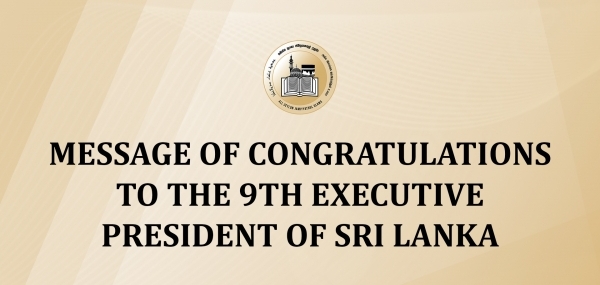April 18, 2009 — The report in the Times of London began: “Pirates caught redhanded by one of Her Majesty’s warships after trying to hijack a cargo ship off Somalia made the grave mistake of opening fire on two Royal Navy assault craft packed with commandos armed with machineguns and SA80 rifles.’’ The references to modern weapons and the use of the modern term “hijacking’’, indicate that this is a recent article (from the November 12, 2008, online edition). In other respects it could have been written 300 years ago.
Pompous triumphalism from the press of the “great powers’’ (which has reached a fever pitch since the US Navy’s April 12 rescue of Richard Philllps, captain of the US-flagged and crewed Maersk Alabama, in which three teenage pirates were killed and one captured) is not the only parallel between the current confrontation between powerful navies and pirates off the coast of Somalia and that in the early 18th century Atlantic — the “golden age of piracy’’.
Both the piracy of the “golden age’’ — which created the popular mythology reflected in everything from Robert Louis Stevenson’s Treasure Island to Johnny Depp’s Pirates of the Caribbean movies — and that of contemporary Somalia were responses of the downtrodden to the devestating effects of globalising capitalism.
The 18th century pirates were victims the first intercontinental economy: Atlantic slavery. In the triangular trade in which manufactured goods went from Europe to Africa, slaves from Africa to the Caribbean, and plantation commodities (raw materials for the Industrial Revolution) from the Caribbean back to Europe, malnutrition and brutal discipline affected sailors almost as much as it did slaves. Sailors and slaves who became pirates sought to turn the increase in oceanic trade to their advantage.
Victims of Western plunder
Today’s Somali pirates have been victims of the devastation that neoliberal globalisation has wrought on Africa, the destruction of local fisheries by industrial fishing techniques and one of the most hushed-up aspects of globalisation: the dumping of the first world’s toxic and nuclear waste in vulnerable Third World locations. The concentration of manufacturing in particular parts of the world (such as southern China) that accompanied the recently ended economic boom, created an exponential increase in intercontinental shipping that the Somali pirates, like their 18th century counterparts, sought to take advantage of.
Since the overthrow of dictator Siad Barre in 1991, Somalia has not had a functioning state. Continual violence by rival clan-based warlords, militias and criminal gangs has twice been punctuated by foreign intervention: by a US-led UN-mandated “humanitarian intervention’’ force between 1992 and 1995, and by Ethiopia (acting as a US proxy) between 2006 and January 2009. While both interventions were responsible for tens of thousands of deaths and widespread rape, torture and destruction of property, neither succeeded in subduing the country.
Western journalism has emphasised one side of the relationship between this chaos and the rise of piracy: ready access to arms and lack of governmental authority. In an article posted on the internet-based Huffington Post on April 13, Canada-based Somali hip hop artist and activist K’naan explained the other side: “Already by [1992], local fishermen in the coastline of Somalia have been complaining of illegal vessels coming to Somali waters and stealing all the fish. And since there was no government to report it to, and since the severity of the violence — overshadowed every other problem, the fishermen went completely unheard.’’
According to a January 5, 2009, article by British Independent columnist Johann Hari, foreign illegal fishing in Somali waters nets more than $300 million a year.
“But it was around this same time that a more sinister … practice was being put in motion’’, K’naan continues. “A Swiss firm called Achair Parterns, and an Italian waste company [Progresso], made a deal with [Somali warlord] Ali Mahdi, that they were to dump containers of waste material in Somali waters. These European companies were said to be paying warlords about $3 a ton, whereas to properly dispose of waste in Europe costs about $1000 a ton.’’
After the December 2004 “tsunami washed ashore several leaking containers, thousands of locals in the Puntland region of Somalia started to complain of severe and previously unreported ailments, such as abdominal bleeding, skin melting off and a lot of immediate cancer-like symptoms… But this wasn’t just a passing evil from one or two groups taking advantage of our unprotected waters. The UN envoy for Somalia, Ahmedou Ould-Abdallah, says that the practice still continues to this day. It was months after those initial [1992] reports that local fishermen mobilised themselves, along with street militias, to go into the waters and deter the Westerners from having a free pass at completely destroying Somalia’s aquatic life.’’
 According to an October 11, 2008, Al Jazeera report, Ould-Abdallah confirmed “that European and Asian companies are dumping toxic waste, including nuclear waste, off the Somali coastline’’.
According to an October 11, 2008, Al Jazeera report, Ould-Abdallah confirmed “that European and Asian companies are dumping toxic waste, including nuclear waste, off the Somali coastline’’.
UN Environment Program spokesperson Nick Nuttall told Al Jazeera “the waste is many different kinds. There is uranium radioactive waste. There is lead, and heavy metals like cadmium and mercury. There is also industrial waste, and there are hospital wastes, chemical wastes – you name it.’’
Abdi Ismail Samatar, professor of Geography at the University of Minnesota, pointed out to Al Jazeera that the naval forces despatched to the Gulf of Aden to protect shipping from the pirates have turned a blind eye to the waste dumping. “Piracy is not the only problem for Somalia, and I think it’s irresponsible on the part of the authorities to overlook this issue’’, he said.
Self-defence
The piracy has developed from a defensive activity by fishing communities into a highly profitable business with at least $30 million being paid in ransoms in 2008. The modus operendi of exchanging captured ships, their cargoes and their crews for ransoms has meant that the mariners held hostage have generally been well treated. No hostages have been killed by pirates. Among the economic activities flourishing in the pirate ports have been resteraunts catering to the tastes of the foreign crews.
On September 23, 2008, a group of pirates chanced upon a Ukrainian freighter the MV Faina. “We just saw a big ship, so we stopped it’’, pirate spokesperson Sugale Ali told the October 1, 2008, New York Times in satellite phone interview from the bridge of the hijacked vessel. Much to the their surprise, the pirates discovered the ship to be carrying a large amount of heavy weapons, including 33 tanks. This was the trigger for Western naval forces to be deployed in the area, amid concerns that the weapons may be sold to the warring Somali militias.
These concerns, however, were unfounded. “Somalia has suffered from many years of destruction because of all these weapons. We don’t want that suffering and chaos to continue. We are not going to offload the weapons. We just want the money’’, Sugale explained.
The MV Faina was eventually ransomed for $3.2 million. While the global economy and global shipping were booming, paying the occasional ransom was absorbed by shipping companies as an operating cost, cheaper than either sailing ships around the Cape of Good Hope to avoid Somali waters or hiring mercanaries such as Blackwater to provide security. The global economy’s collapse may be changing this.
Jeremy Scahill, author of Blackwater: The Rise of the World’s Most Powerful Mercenary Army, pointed out on his website RebelReports.com that the owners of the Maersk Alabama earn $500 million a year as a Pentagon subcontractor. The US denied that the Alabama was working for the Pentagon when the pirates attacked. He also questioned the official version of the rescue of Captain Phillips, pointing out that the lifeboat containing Phillips and his three captors was under tow from a US warship, and that the pirates were negotiating to exhange him for money and safe passage, when US navy snipers shot the pirates.
At an April 16 press conference US Secretary of State Hilary Clinton forshadowed a tougher line on piracy. “We may be dealing with a 17th-century crime, but we need to bring 21st-century solutions to bear’’, she said. One of the solutions she touted — freezing pirates’ assets — is peculiar given that the pirates do not use banks. It could, however, be used to pressure shipping companies against paying ransoms.
France has also stepped up operations against pirates. On April 4, the French navy stormed a hijacked luxury yacht, killing one of the hostages along with two pirates. On April 16, 11 pirates were captured when their vessel was seized by the French. The US and French naval pressure has not diminished pirate activity. The April 16 Independent reported, “brigands have seized four vessels and more than 75 hostages since Sunday’’.
Furthermore, this aggressive approach increases the likelihood of pirates harming seafarers. Andrew Mwangura, coordinator of Mombasa-based East African Seafarers Assistance Program, told Reuters on April 12, “This is a big wake-up to the pirates. It raises the stakes. Now they may be more violent, like the pirates of old.’’
According to the same article: “`The French and the Americans will regret starting this killing. We do not kill, but take only ransom. We shall do something to anyone we see as French or American from now,’ Hussein, a pirate, told Reuters by satellite phone.’’
The April 12 NYT quoted Abdullahi Lami, who it described as “one of the pirates holding a Greek ship anchored in the pirate den of Gaan’’ as saying: “Every country will be treated the way it treats us. In the future, America will be the one mourning and crying.’’
Like the pirates of the “golden age’’, todays Somali pirates see themselves as fighting for justice. As Sugale Ali told the October 1, 2008, NYT: “We don’t consider ourselves sea bandits. We consider sea bandits those who illegally fish in our seas and dump waste in our seas and carry weapons in our seas. We are simply patrolling our seas. Think of us like a coast guard.’’
And as with the 18th century pirates, they have the sympathy of many in their communities. As K’naan explained: “The truth is, if you ask any Somali, if getting rid of the pirates only means the continuous rape of our coast by unmonitored Western vessels, and the production of a new cancerous generation, we would all fly our pirate flags high. It is time that the world gave the Somali people some assurance that these Western illegal activities will end, if our pirates are to [cease] their operations. We do not want the EU and NATO serving as a shield for these nuclear waste-dumping hoodlums.’’
Post Disclaimer | Support Us
Support Us
The sailanmuslim.com web site entirely supported by individual donors and well wishers. If you regularly visit this site and wish to show your appreciation, or if you wish to see further development of sailanmuslim.com, please donate us
IMPORTANT : All content hosted on sailanmuslim.com is solely for non-commercial purposes and with the permission of original copyright holders. Any other use of the hosted content, such as for financial gain, requires express approval from the copyright owners.
 Sri lanka Muslims Web Portal Diversity and Inclusiveness – Sri Lanka Muslims
Sri lanka Muslims Web Portal Diversity and Inclusiveness – Sri Lanka Muslims




We hear much about Somali pirates but hardly anything at all about the underlying issues. Is it piracy or is it a struggle for justice against the predatory capitalism of some powerful countries? This article has thought-provoking material